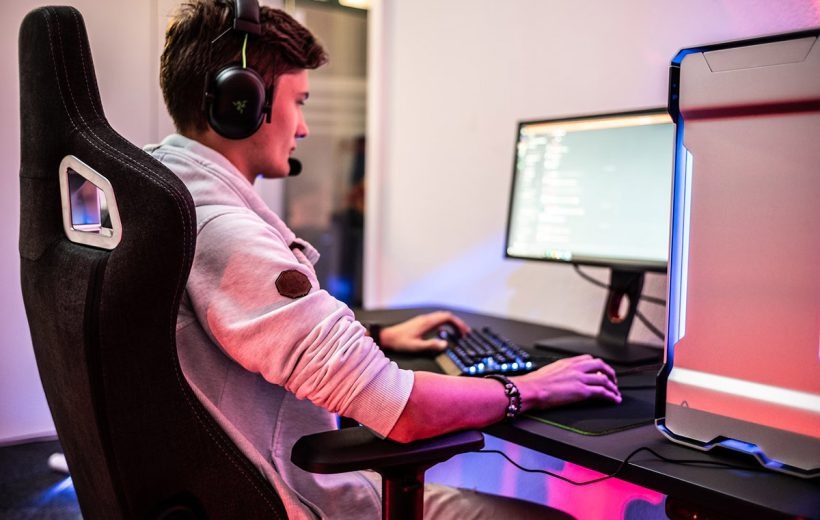Mastering the Art of 3D Game Design Control: A Comprehensive Guide

Introduction
In the vast and dynamic world of video games, one of the key elements that can make or break a player’s experience is the control system. The intricate dance between the player’s inputs and the on-screen actions is a delicate balance that game designers strive to perfect. In the realm of 3D game design, where immersive environments and realistic graphics dominate, achieving intuitive and responsive control is paramount. This blog post will delve into the intricacies of 3D game design control, exploring the challenges faced by designers and offering insights into creating a seamless and enjoyable player experience.
Understanding the Player’s Perspective
Before delving into the technical aspects of 3D game design control, it’s crucial to understand the player’s perspective. Players seek an immersive experience where they feel connected to the virtual world, and a significant part of achieving this lies in the control system. Designers must prioritize creating controls that are intuitive, responsive, and ultimately enhance the player’s sense of agency within the game environment.
The Challenges of 3D Space
Unlike 2D games, 3D game design introduces an additional layer of complexity due to the depth and three-dimensional nature of the environments. Players navigate not only left and right but also forward, backward, up, and down. This complexity presents challenges for designers in creating controls that are both comprehensive and user-friendly. Striking a balance between freedom of movement and simplicity is key to avoiding overwhelming players.
Camera Control and Perspective
One of the critical elements in 3D game design control is the management of the in-game camera. The player’s perspective is directly tied to the camera, and poor camera control can lead to frustration and disorientation. Designers must implement camera systems that adapt to the environment, providing clear visibility of crucial elements while remaining unobtrusive. Options for customizable camera angles and perspectives empower players to tailor the experience to their preferences.
Input Devices and Accessibility
A diverse range of input devices, from traditional controllers to keyboard and mouse setups, adds another layer of complexity to 3D game design control. Designers must ensure that the game is accessible and enjoyable across various platforms and input methods. This involves mapping controls in a way that feels natural for each device and providing customization options for players to fine-tune their preferences.
Fine-Tuning Movement Mechanics
Movement is at the core of any game, and in the 3D space, it becomes even more crucial. Striking a balance between realistic movement and responsive controls is a delicate task. Designers need to consider factors such as character speed, acceleration, and deceleration to create a fluid and natural feel. Implementing physics-based movement can enhance the realism of the gaming experience, but it must be carefully tuned to avoid frustration or awkwardness.
Incorporating Interactive Elements
Interactive elements within the game environment, such as climbing, swimming, or flying, add depth to the player experience. Designers must create controls that seamlessly transition between these activities, ensuring that the player can interact with the virtual world intuitively. Context-sensitive controls, where the same input triggers different actions based on the situation, contribute to a smoother and more immersive gameplay experience.
Feedback and Responsiveness
A responsive control system is not just about accurate input recognition; it also involves providing immediate feedback to the player. Visual and auditory cues, such as animation responsiveness and sound effects, enhance the connection between the player’s actions and the in-game response. Designers must pay careful attention to latency, ensuring that there is minimal delay between player input and on-screen feedback.
Iterative Design and Playtesting
Creating an effective 3D game design control system is an iterative process that requires constant playtesting and refinement. Gathering feedback from players at various stages of development allows designers to identify pain points and make necessary adjustments. Iterative design is crucial for achieving a control system that feels polished and enjoyable, ultimately enhancing the overall gaming experience.
Conclusion
Mastering 3D game design control is a multifaceted challenge that requires a deep understanding of player psychology, spatial awareness, and technical implementation. Striking the right balance between freedom of movement and simplicity, managing the camera effectively, and incorporating interactive elements are key considerations. With a focus on accessibility, responsiveness, and iterative design, game designers can create immersive 3D experiences that captivate players and stand the test of time. As technology continues to advance, the future holds exciting possibilities for further innovations in 3D game design control, promising even more immersive and engaging virtual worlds for players to explore.

3 Comments
This is exactly what i was looking for, thank you so much for these tutorials
It would be great to try this theme for my businesses
What a nice article. It keeps me reading more and more!